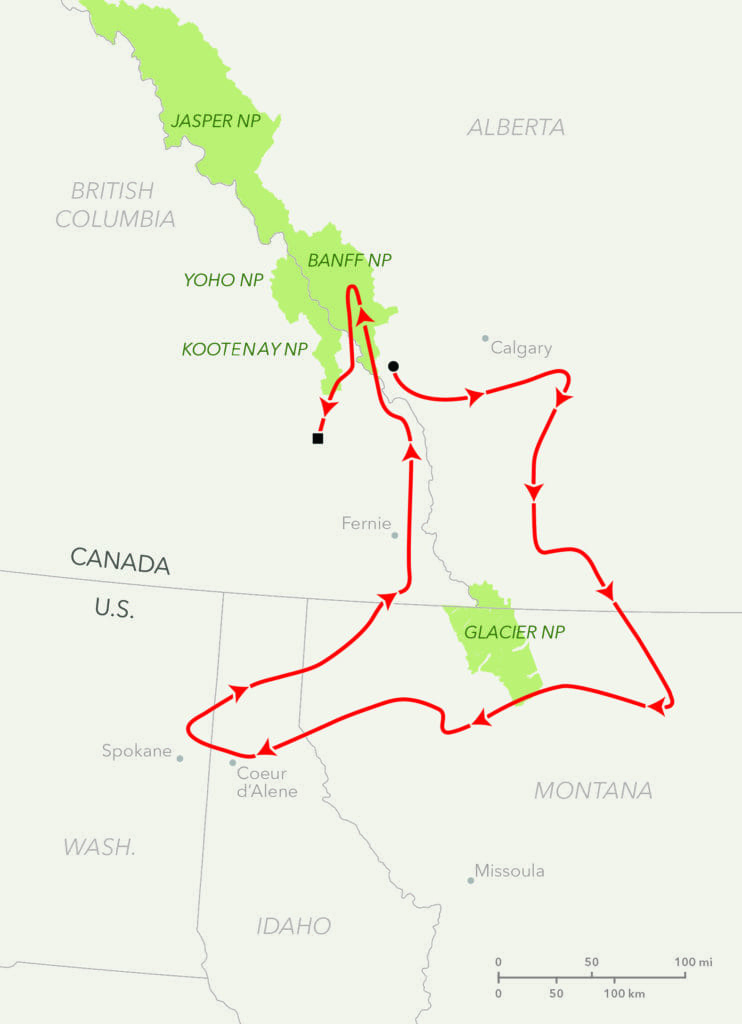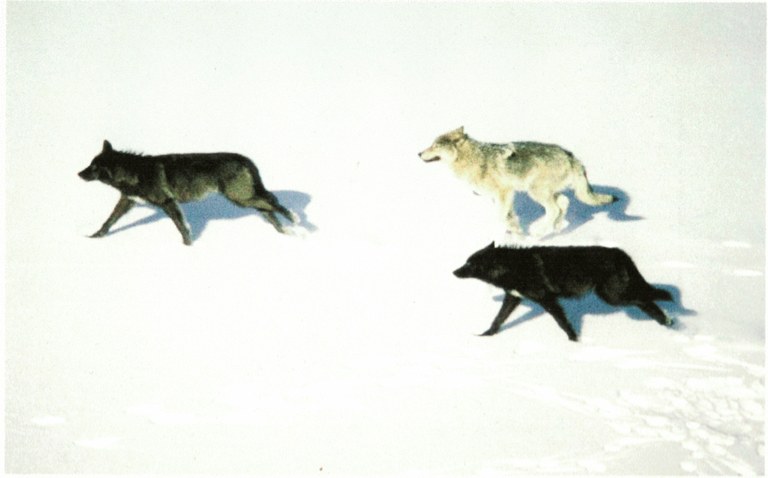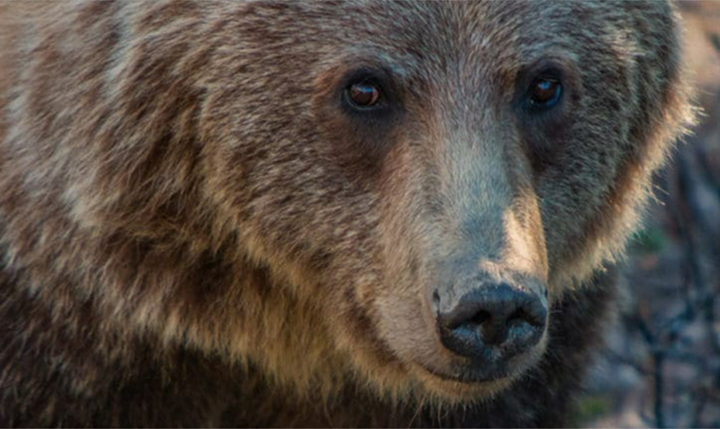Wildlife show us the need to protect wide tracts of land that support migration
If you’re like most people in North America, you likely travel by foot about two miles (3 km) a day. But the average grizzly bear? Its home range covers an area up to 1,500 square miles (3,885 km2). And it’s not the only species that travels such large distances in the Yellowstone to Yukon region.
A tale of two wolves
Back in the early 1990s, biologists started using improvements in radio collars, satellite transmitters and GPS technology to track wildlife movements in the Canadian Rockies.
One animal they began following was a female gray wolf they named Pluie (ploo-ee; French for rain).
Radio-collared in Alberta’s Kananaskis Country on a rainy day in June 1991, over the next nine months Pluie covered more than 40,000 square miles (100,000 km2) — that’s 15 times the size of Banff National Park or 10 times the size of Yellowstone National Park. During this period, she spent time with five different packs.
“She was moving so fast,” World Wildlife Fund zoologist Paul Paquet told the New York Times, “We thought she was on a pickup truck for a while.”
During her travels, Pluie crossed more than 30 different political jurisdictions (including two countries, three states, two provinces, private lands, various federal jurisdictions, and First Nations territories).
In doing so, she showed that effective conservation must go beyond national, provincial and state borders and offer a way to protect animals on the move from barriers such as development and highways. It was this data that inspired Y2Y’s founding.
Pluie isn’t the only charismatic female to have captured the public imagination in recent years.
National Geographic described Yellowstone’s Wolf 06 as a “once-in-a-generation hunter.” With an “owl-like mask around her eyes,” 06 was remarkably powerful.
Weighing 100 pounds (45 kg), 06 often brought down an elk by herself — a task that typically takes a whole pack. Sadly, 06’s life came to an end when she was legally hunted by a hunter after leaving the protection of the park.
The life stories of these wolves show that although parks and protected areas are essential for biodiversity, their need to roam demands that we think bigger — we must also consider the challenges these animals face in order to conserve healthy populations that need huge areas to thrive.
In the end, effective conservation must work on a large scale to protect wildlife on the move from civilization’s threats between and surrounding protected areas.
In our 25th year, we know the work you’ve supported has improved the connections between parks by more than 30 percent.
Thank you for your role in improving and linking this interconnected system of wild lands and waters stretching from Yellowstone to Yukon — one that harmonizes the needs of people with those of nature.

Pluie’s journey
Radio-collared in Alberta’s Kananaskis Country in June 1991, over the next nine months Pluie covered more than 40,000 square miles (100,000 km2) — that’s 15 times the size of Banff National Park or 10 times the size of Yellowstone National Park.
Other animals such as lynx, cougars, golden eagles and bull trout have also been recorded traveling distances of more than 1,000 miles (1,600 km).


